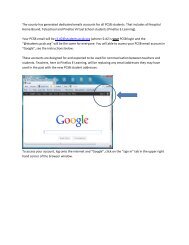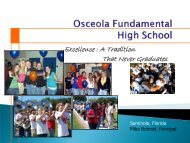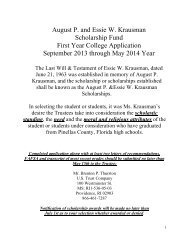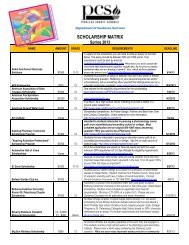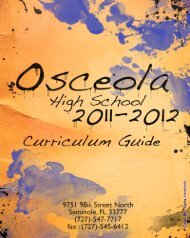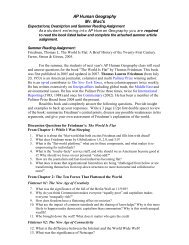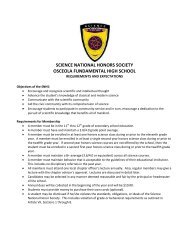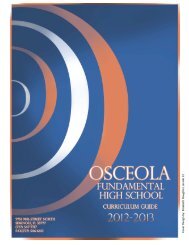Florida US History End-of-Course Assessment Test Item Specifications
Florida US History End-of-Course Assessment Test Item Specifications
Florida US History End-of-Course Assessment Test Item Specifications
- No tags were found...
You also want an ePaper? Increase the reach of your titles
YUMPU automatically turns print PDFs into web optimized ePapers that Google loves.
Overall Considerations<br />
This section <strong>of</strong> the <strong>Specifications</strong> describes the guidelines that apply to all test items developed<br />
for the U.S. <strong>History</strong> EOC <strong>Assessment</strong>.<br />
Overall considerations are broad item-development issues that should be addressed during the<br />
development <strong>of</strong> test items. Sections <strong>of</strong> Criteria for U.S. <strong>History</strong> EOC <strong>Assessment</strong> <strong>Test</strong> <strong>Item</strong>s<br />
relate more specifically to one aspect <strong>of</strong> the development (e.g., content limits or stimulus<br />
attributes).<br />
1. Most test items should be written to measure primarily one benchmark; however,<br />
other benchmarks may also be reflected in the item context.<br />
2. Some benchmarks are combined for assessment; the individual specification<br />
indicates which benchmarks are combined.<br />
3. <strong>Test</strong> items should be appropriate for students in terms <strong>of</strong> course content experience<br />
and difficulty, cognitive development, and reading level.<br />
4. <strong>Test</strong> items should be written to match a variety <strong>of</strong> cognitive levels. Each benchmark<br />
should be assessed by items <strong>of</strong> varying cognitive complexity.<br />
5. The reading level <strong>of</strong> the test items should be Grade 10, except for specifically<br />
assessed U.S. <strong>History</strong> terms or concepts.<br />
6. <strong>Test</strong> items should assess the application <strong>of</strong> the concept rather than the<br />
memorization <strong>of</strong> U.S. <strong>History</strong> dates, names, facts, laws, or theories unless otherwise<br />
noted in the individual benchmark specifications.<br />
7. <strong>Test</strong> items should not require the student to define terms but to understand terms<br />
used in context.<br />
8. <strong>Test</strong> items must not require the creation <strong>of</strong> a chart, graph, or table.<br />
9. Each test item should be written to clearly elicit the desired response.<br />
10. <strong>Test</strong> items should not be designed to create a disadvantage or exhibit disrespect to<br />
anyone in regard to age, gender, race, ethnicity, language, religion, socioeconomic<br />
status, disability, occupation, or geographic region.<br />
11. <strong>Test</strong> items should be written in the past tense.<br />
12. All test items should be placed in a real-world context unless otherwise noted in the<br />
individual benchmark specifications. The context should lead the student<br />
cognitively to the question. Every effort should be made to keep the test items as<br />
concise as possible without losing cognitive flow or missing the overall idea or<br />
concept.<br />
13. The item content should be timely but not likely to become dated too quickly.<br />
2 | U.S. <strong>History</strong> <strong>End</strong>-<strong>of</strong>-<strong>Course</strong> <strong>Assessment</strong> <strong>Test</strong> <strong>Item</strong> <strong>Specifications</strong> <strong>Florida</strong> Department <strong>of</strong> Education



